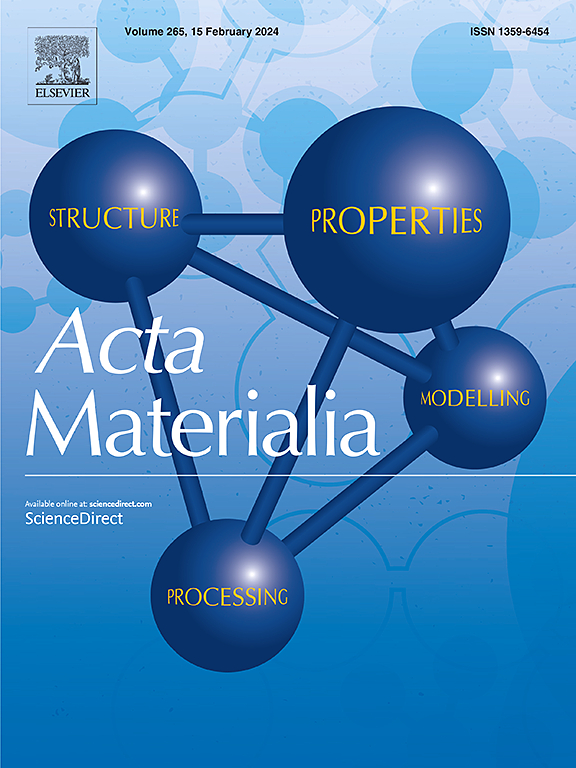二元扩散偶联中示踪剂、杂质和本征扩散系数和原子相关因子的组合测量
IF 9.3
1区 材料科学
Q1 MATERIALS SCIENCE, MULTIDISCIPLINARY
引用次数: 0
摘要
对原子扩散的基本理解对于多组分合金应用中的技术进步至关重要。增强示踪-扩散耦合方法提供了沿整个扩散路径的成分相关示踪扩散系数(迁移率)。本研究引入了一种新的方法来获取扩散偶的空位通量计算,证实了除了扩散间系数外,单个扩散偶实验可以获得的丰富的扩散参数。我们证明了成分相关的热力学因子和曼宁因子可以用这种方法估计。此外,首次估计了扩散偶中扩散元件的成分相关因子。通过在Matano平面上放置合适的示踪剂,采用一种改进的示踪剂-扩散耦合方法来估计成分依赖的杂质扩散系数。对所调查的整个浓度范围的昂萨格系数进行了估计。在Ni-Fe扩散对的空位通量下,Cr、Co和Mn原子偏向富ni侧,而Mn原子的空位通量驱动漂移最为明显。本文章由计算机程序翻译,如有差异,请以英文原文为准。


Combined measurements of composition-dependent tracer-, impurity- and intrinsic diffusion coefficients and atomic correlation factors from a binary diffusion couple
A fundamental understanding of atomic diffusion is crucial for technological advances in the application of multi-component alloys. The augmented tracer-interdiffusion couple approach provides the composition-dependent tracer diffusion coefficients (mobilities) along the whole diffusion path. This study introduces a novel methodology for accessing the vacancy flux calculations in a diffusion couple, substantiating a rich variety of the diffusion parameters accessible by a single diffusion couple experiment aside of the interdiffusion coefficients. We demonstrate that the composition-dependent thermodynamic factors and Manning’s factors can be estimated using this approach. Furthermore, the composition-dependent correlation factors of the diffusing elements in a diffusion couple are estimated for the first time. A modified tracer-interdiffusion couple approach is applied to estimate the composition-dependent impurity diffusion coefficients by placing suitable radiotracers at the Matano plane. The Onsager coefficients are estimated for the whole concentration range under investigation. Under the vacancy flux in the Ni–Fe diffusion couple, Cr, Co, and Mn atoms are biased towards the Ni-rich side, though the vacancy flux-driven drift of the Mn atoms is most pronounced.
求助全文
通过发布文献求助,成功后即可免费获取论文全文。
去求助
来源期刊

Acta Materialia
工程技术-材料科学:综合
CiteScore
16.10
自引率
8.50%
发文量
801
审稿时长
53 days
期刊介绍:
Acta Materialia serves as a platform for publishing full-length, original papers and commissioned overviews that contribute to a profound understanding of the correlation between the processing, structure, and properties of inorganic materials. The journal seeks papers with high impact potential or those that significantly propel the field forward. The scope includes the atomic and molecular arrangements, chemical and electronic structures, and microstructure of materials, focusing on their mechanical or functional behavior across all length scales, including nanostructures.
 求助内容:
求助内容: 应助结果提醒方式:
应助结果提醒方式:


